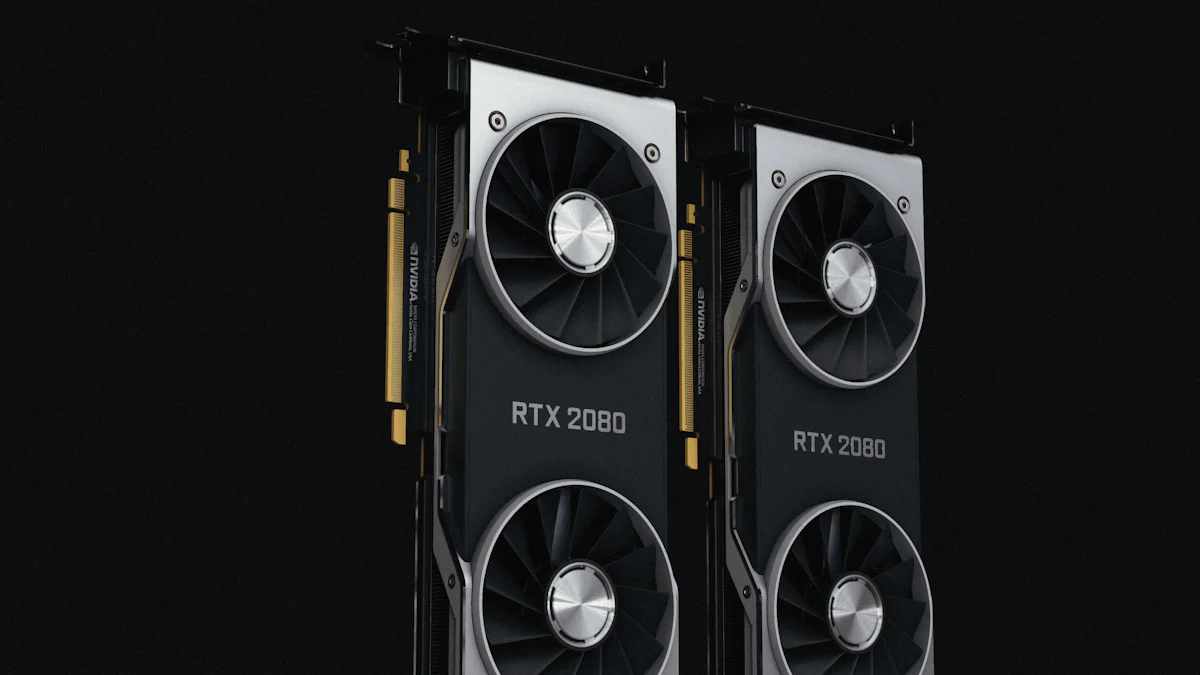
# Why PyTorch (opens new window) GPU Efficiency Matters
# The Magic Behind PyTorch and GPUs (opens new window)
PyTorch, a popular deep learning (opens new window) framework, revolutionizes how we build AI models (opens new window). GPUs are the secret sauce that makes PyTorch lightning-fast.
# What is PyTorch?
PyTorch is like a supercharged brain for computers. It helps them learn from data and make smart decisions quickly.
# Why GPUs Are a Game-Changer
GPUs act as the muscle behind PyTorch, making complex calculations at warp speed. They turbocharge our AI projects.
# The Impact of Efficiency on Learning and Projects
Efficient GPU usage means learning happens in a flash, like reading a book at lightspeed.
# Faster Learning Times
With optimized GPU usage, we can train our AI models quicker than ever before (opens new window), unlocking new possibilities.
# Better Results with Less Effort
By harnessing the power of GPUs, we achieve top-notch results (opens new window) with minimal sweat and tears.
# Steps to Maximize Your PyTorch GPU Usage
To ensure your PyTorch GPU is firing on all cylinders, let's dive into some key steps that can supercharge your deep learning journey.
# Checking Your Setup
# Ensuring PyTorch Sees Your GPU
Before diving into the world of PyTorch GPUs, it's crucial to double-check that PyTorch recognizes your GPU. This step ensures that you're harnessing the full power of your hardware for accelerated learning.
# The Basics of torch.cuda (opens new window)
torch.cuda (opens new window) serves as the gateway to unleashing the potential of your GPU. By understanding the basics of this tool, you pave the way for seamless integration and efficient utilization of your PyTorch GPU.
# Optimizing Your Code for GPU
# Simple Tweaks for Big Gains
Small adjustments in your code can lead to significant performance boosts when utilizing PyTorch GPUs. From optimizing data loading to fine-tuning model architectures, every tweak counts towards maximizing efficiency.
# Leveraging CUDA for Speed
By tapping into the capabilities of CUDA, a parallel computing platform, you can accelerate computations on your PyTorch GPU. This optimization technique propels your deep learning tasks to new heights of speed and efficiency.
# Scaling Up: Using Multiple GPUs
# When One GPU Isn't Enough
As your projects grow in complexity, a single GPU might struggle to keep up with the demands. Transitioning to multiple GPUs allows you to distribute workloads effectively and conquer more ambitious AI challenges.
# The Power of Parallel Processing (opens new window)
Harnessing the power of parallel processing through multiple GPUs unlocks unparalleled computational capabilities. This approach not only speeds up training times but also enables tackling larger datasets with ease.
# Real-World Benefits of Efficient PyTorch GPU Use
# Success Stories: From Slow to Wow
# Personal Anecdote: My First GPU Optimization
Let me take you on a journey through my first encounter with optimizing GPUs in PyTorch. Picture this – a sluggish AI model struggling to make predictions at a snail's pace. With a few tweaks and embracing the power of GPUs, the transformation was astounding. What once took hours now completes in minutes, unlocking a world of possibilities and sparking my passion for efficient deep learning.
# Industry Examples: Big Wins with GPUs
In the realm of industry giants, the impact of leveraging PyTorch GPUs is nothing short of revolutionary. Companies witnessing exponential growth in AI capabilities attribute their success to optimized GPU usage. From enhancing recommendation systems to revolutionizing image recognition technologies, these real-world examples showcase the game-changing potential of harnessing PyTorch GPUs for unparalleled achievements.
# Looking Ahead: The Future of GPUs in Deep Learning
# Emerging Technologies and Trends
The horizon brims with exciting advancements poised to shape the future of deep learning with GPUs at the forefront. Innovations like distributed training frameworks (opens new window) and hardware accelerators promise enhanced performance and scalability. Embracing these cutting-edge technologies ensures staying ahead in the ever-evolving landscape of AI, opening doors to unprecedented possibilities and breakthroughs.
# Preparing for What's Next
As we stand on the cusp of a new era in deep learning, readiness is key to navigating upcoming challenges and opportunities. Adapting to emerging trends such as federated learning (opens new window) and quantum computing integration (opens new window) equips us to tackle complex AI tasks with finesse. By staying proactive and continuously honing our skills, we pave the way for groundbreaking advancements that push the boundaries of what's achievable in the realm of PyTorch GPU efficiency.
# Wrapping Up
# Key Takeaways
# Remember the Fundamentals
When diving into the world of PyTorch GPU efficiency, always keep in mind the basics. Understanding how GPUs enhance deep learning processes is crucial for maximizing performance.
# Embrace Continuous Exploration
Exploration and experimentation are the pillars of growth in the realm of PyTorch GPUs. Stay curious, try new approaches, and push the boundaries to unlock hidden potentials.
# Your Next Steps
# Path to Ongoing Learning
To deepen your understanding of PyTorch GPU optimization, delve into online resources, tutorials, and community forums. Continuous learning is key to staying at the forefront of efficient deep learning practices.
# Take Action Now: Optimize Today!
Don't wait for tomorrow; kickstart your journey towards optimized PyTorch GPU usage today. Implement the strategies you've learned, experiment with new techniques, and witness firsthand the transformative power of efficient GPU utilization.
In your quest for deep learning success, remember that every step you take towards enhancing PyTorch GPU efficiency brings you closer to achieving groundbreaking results. Start optimizing now and pave the way for a future filled with AI innovation and excellence.